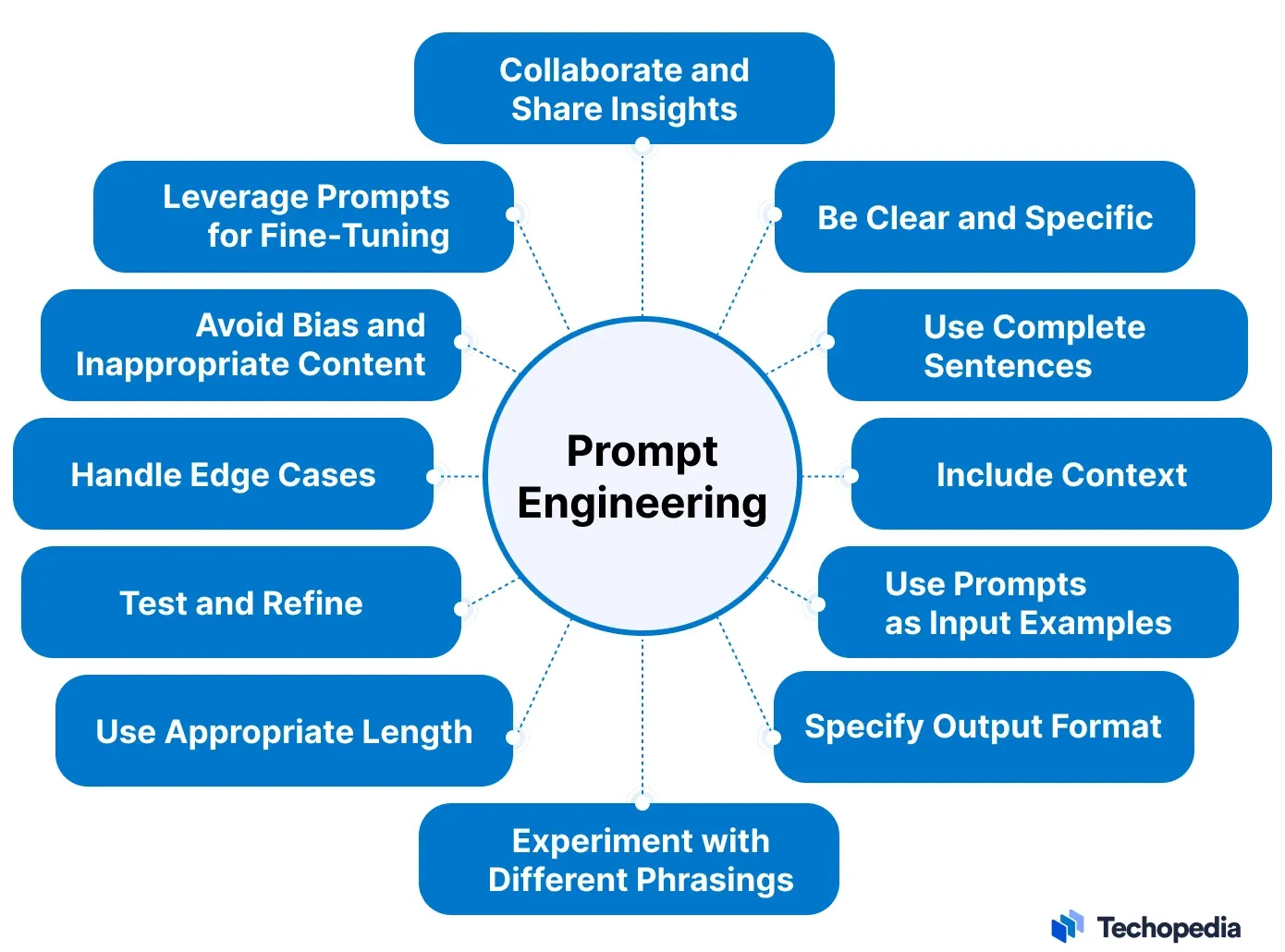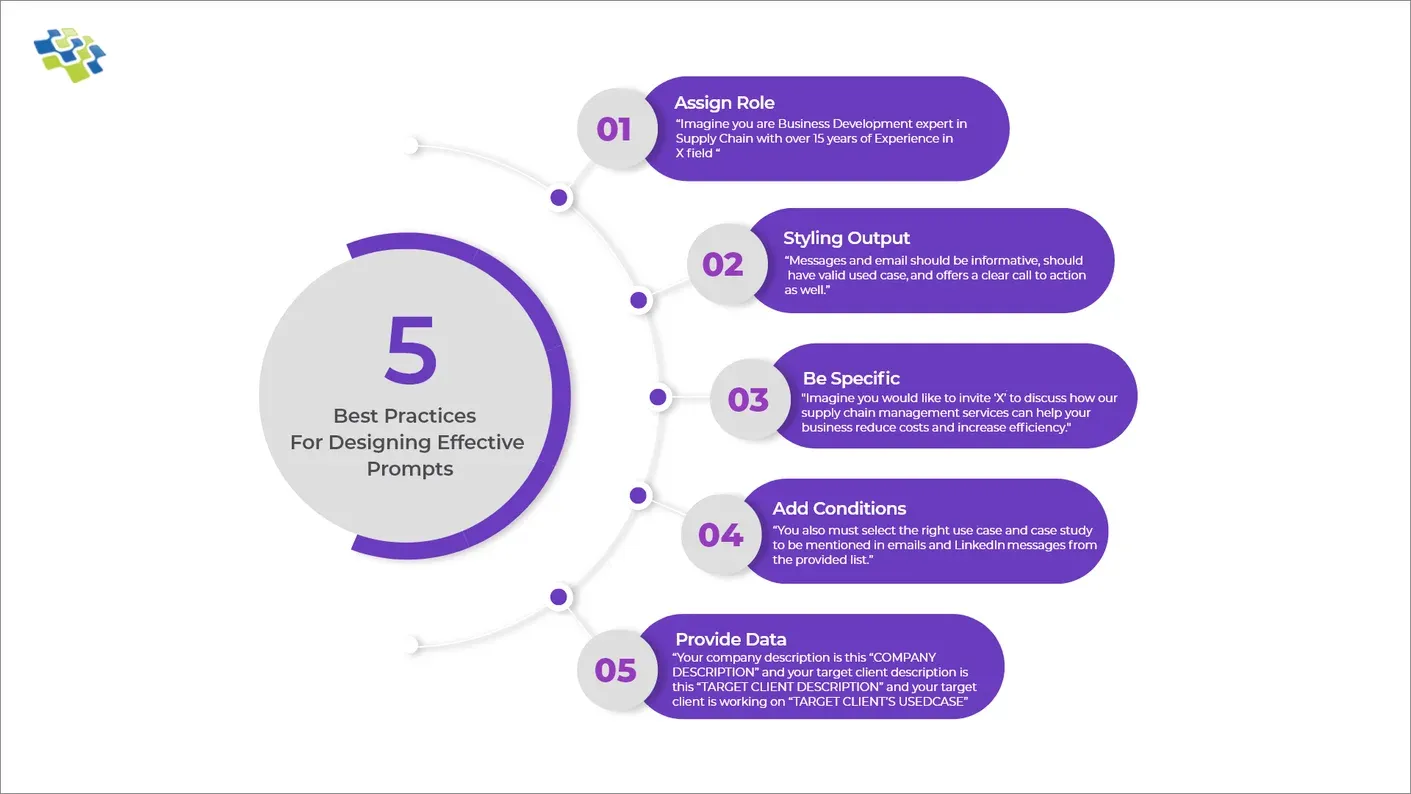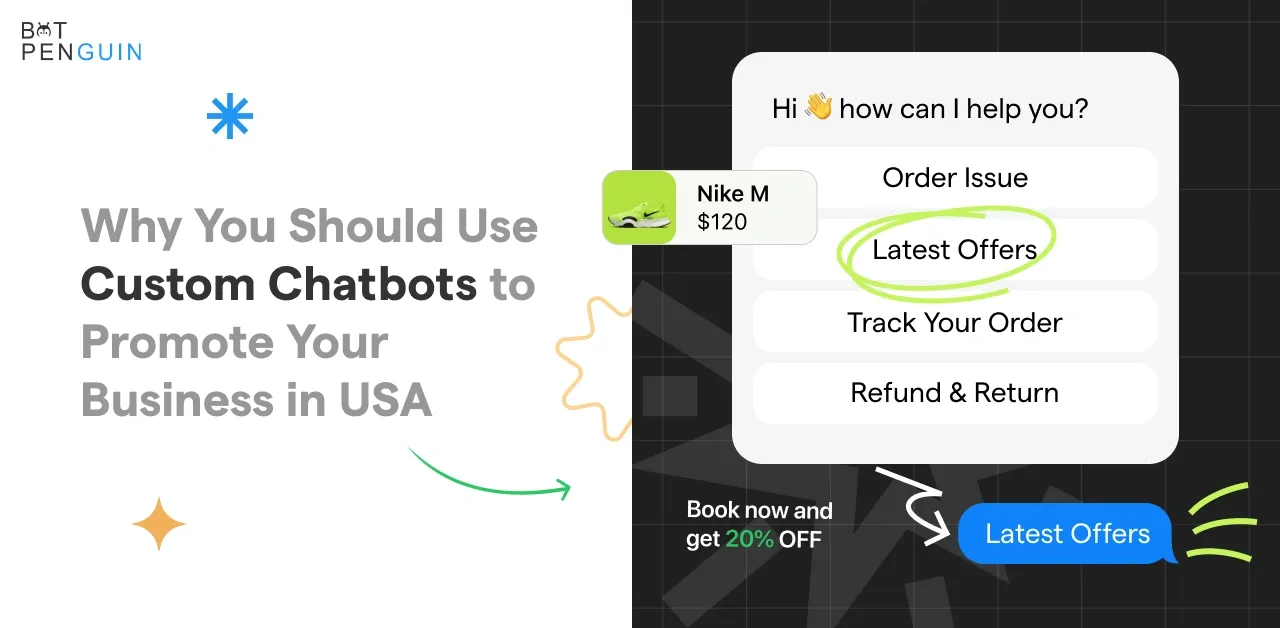As large language models like GPT-3 and Codex enable new AI applications, properly formulating text prompts is key to unlocking value. Surveys show 63% of organizations actively experiment with prompt programming to optimize performance for use cases like content writing, data analysis, and search relevance (Appen, 2022).
Analyzing model outputs reveals techniques that boost accuracy and alignment with goals. Incorporating natural language and terminology from the problem domain reduces confusion (Metrics.AI, 2023). Providing examples guides expected model behavior. Adding relevant context allows tuning responses to needs.
Advances like chain-of-thought prompting enable drastic data efficiency improvements for query-based tasks, easing prompt programming. Recent funding validates the domain's potential. OpenAI launched a $200M fund for prompt startups, while Cohere raised $125M to simplify techniques.
As organizations target specialized implementations across functions, robust prompting will drive impactful adoption.
Understanding AI Prompt Engineering
AI prompt engineering is the process of designing and creating prompts that are used to elicit responses from an AI model.
These prompts can take many forms, such as text, voice, or image prompts. The goal is to create clear and concise prompts while still providing enough information for the AI model to generate an accurate response.
Importance and Benefits of AI Prompt Engineering
Good AI prompt engineering is crucial for the performance of an AI model. Poorly designed prompts can lead to inaccurate or irrelevant responses.
On the other hand, well-designed prompts can result in more accurate and relevant responses, leading to a better user experience.
Good AI prompt engineering can also save time and money by reducing the need for manual data labeling.
By using well-designed prompts, AI models can learn from less data compared to models that use poorly designed prompts.
Common Challenges and Misconceptions
One of the biggest challenges in AI prompt engineering is designing informative and concise prompts. There is often a tradeoff between providing enough information for the model to generate an accurate response while keeping the prompt short and simple. Finding the right balance is key.
Another common misconception is that AI prompt engineering is a one-time process. In reality, prompt engineering is an iterative process that requires ongoing refinement. Prompt engineering is not a set-it-and-forget-it task.
Define the Objective
Setting clear objectives for AI prompts is essential in ensuring their effectiveness. By defining clear objectives, you provide a specific direction for your AI model, allowing it to generate more accurate and relevant responses.
Importance of Setting Clear Objectives for AI Prompts
Clear objectives help guide the AI model by specifying the desired outcome. Without clear objectives, the AI model might provide responses that do not align with the intended purpose, causing confusion and frustration for users.
Strategies for Defining Objectives Effectively
When defining objectives for AI prompts, consider the specific task or problem the AI model is meant to address. Clearly articulate the desired result or information you want the AI model to produce. Additionally, think about any constraints or limitations that may impact the objectives.
- Content creation:
Write a 300-word blog post about the benefits of meditation, aimed at beginners, in an informal, engaging tone.
- Data analysis:
Analyze the attached sales data and identify the top 3 best-selling products in the Northwest region. Highlight key trends and insights in a summary format.
- Customer service:
Respond to the customer's question in a friendly and helpful tone, providing options for troubleshooting their technical issue or routing them to the appropriate support resource.
- Search relevance:
For the query "best cuisines in Paris", provide a ranked list of the top 5 most recommended French restaurants in Paris along with a 2-3 sentence description of each restaurant's key highlights and specialty dishes.
By clearly stating the task, desired result, and any limiting factors upfront in the objective, it helps steer the AI model towards providing the most accurate and relevant output. Defining effective objectives is key to prompt programming.
Suggested Reading:
Know Your Audience
Understanding the target audience is crucial in AI prompt engineering. By gaining insights into the audience's preferences, needs, and communication style, you can create prompts that resonate with them.
Importance of Understanding the Target Audience
Knowing your audience allows you to tailor your prompts to their specific needs and preferences.
You can increase user engagement and satisfaction by speaking their language and addressing their pain points.
Techniques for Gathering Audience Insights
To gather insights about your target audience, consider the following techniques:
- Conduct surveys or interviews to understand their needs and expectations.
- Analyze user feedback and reviews to identify common patterns and concerns.
- Utilize analytics tools to gather data on user behavior and preferences.
Applying Audience Knowledge to AI Prompt Engineering
Once you have insights about your audience, you can incorporate that knowledge into your AI prompt engineering.
Choose a language and tone that resonates with your target audience. Focus on addressing their specific needs and pain points in the prompts.

Conduct Proper Keyword Research
Keyword research is vital in optimizing AI prompts while doing Prompt Engineering for improved performance and relevance.
By identifying relevant keywords, you can ensure that your prompts align with user queries and increase the chances of generating accurate responses.
Benefits of Keyword Research for AI Prompt Optimization
Proper keyword research helps in multiple ways:
- Ensures that AI prompts are aligned with user queries.
- Improves the ranking of AI models in search results.
- Increases the relevance and accuracy of the AI model's responses.
Tools and Strategies for Effective Keyword Research
There are several tools and strategies you can use for effective keyword research:
- Use keyword research tools like Google Keyword Planner or SEMrush to identify relevant keywords.
- Analyze search queries and related searches to understand user intent.
- Monitor industry trends and incorporate popular keywords in your prompts.
Incorporating Relevant Keywords in AI Prompts
Once you have identified relevant keywords, incorporate them naturally in your AI prompts. Avoid keyword stuffing and prioritize readability.
Remember, while keywords are important, the overall user experience should remain the top priority.
Suggested Reading:
Craft Compelling AI Prompts
Crafting compelling AI prompts is essential to capture the attention and engagement of users.
By creating prompts that are clear, concise, and engaging, you can enhance the user experience and encourage meaningful interactions with your AI model.
Essential Elements of a Well-crafted AI Prompt
A well-crafted AI prompt should include the following elements:
- Clear and concise language to convey the intended message.
- Relevant context or background information to guide the AI model.
- A specific call to action that prompts the user to provide the desired response.

Optimize AI Prompts for Voice Search
With the rise of voice search, optimizing AI prompts for this popular mode of interaction is important.
By considering the unique characteristics and requirements of voice search, you can ensure that your AI prompts are compatible and effective.
The Rise of Voice Search and its Impact on AI Prompts
Voice search has become increasingly popular due to the convenience and accessibility it offers. Users now expect AI models to understand and respond to voice commands.
This shift requires AI prompt designers to account for speech patterns, natural language, and voice-activated devices.
Voice Search Optimization Best Practices
Here are some best practices for optimizing AI prompts for voice search:
- Include natural pauses and breaks in prompts to allow users to speak their responses.
- Use speech-to-text technology to transcribe user responses accurately.
- Monitor and analyze user feedback to refine and improve voice search optimization efforts.
Suggested Reading:
Hiring Prompt Engineers- easy way to AI automated efficiency
Leverage Natural Language Processing (NLP)
Natural Language Processing (NLP) offers powerful capabilities that can greatly enhance AI prompt engineering.
By utilizing NLP techniques, you can improve the understanding and processing of user input, leading to more accurate and meaningful responses.
Overview of NLP and Its Applications in AI Prompt Engineering
NLP is a branch of AI that focuses on the interaction between computers and human language.
In AI prompt engineering, NLP can be used to analyze, interpret, and generate natural language prompts and responses. It can help improve language understanding, sentiment analysis, and context comprehension.
Benefits of Utilizing NLP Techniques in AI Prompts
Utilizing NLP techniques in AI prompts offers several benefits:
- Improved accuracy in understanding user intent and context.
- Enhanced ability to handle ambiguous or incomplete user input.
- Human-like interactions that make users feel more comfortable and understood.

Utilize Structured Data Markup
Structured data markup is crucial in optimizing AI prompts. By utilizing structured data markup, you can provide additional context and information to your AI model, leading to more accurate and relevant responses.
Explanation of Structured Data Markup and its Relevance to AI Prompts
Structured data markup is a way of organizing and labeling your data to make it more understandable for search engines and AI models.
In the context of AI prompts, structured data markup helps convey specific details and parameters that inform the AI model about the desired input and expected output.
Benefits of Using Structured Data Markup for AI Prompt Optimization
Using structured data markup in AI prompts offers several benefits:
- Improved understanding of user input, leading to more accurate responses.
- Enhanced context comprehension, allowing the AI model to provide more relevant answers.
- Increased efficiency in processing user input, resulting in faster response times.
And speaking of chatbots, get custom-made conversational AI solutions from BotPenguin by hiring ChatGPT Developers in 3 days. Our developers pack 5+ Years of experience designing prompts, embeddings, plugins, training, chatbots, or any custom application for efficient NLP and language model use.
- Whitelabel ChatGPT
- Hire ChatGPT Developers
- Custom ChatGPT Plugins
- Hire Chatbot Developers
- Custom Chatbot Development
- ChatGPT Clone
- ChatGPT Consultant
Perform A/B Testing
A/B testing is an essential technique in AI prompt engineering. By conducting A/B tests on your prompts, you can gather valuable insights and data to optimize and improve their effectiveness.
Importance of A/B testing for AI prompt engineering
A/B testing allows you to compare different versions of the same prompt and measure their performance.
This helps identify which prompts are the most effective in generating desired user responses and maximizing user engagement.
Strategies for conducting effective A/B tests on AI prompts
Here are some strategies for conducting effective A/B tests on AI prompts:
- Define clear goals and success metrics for your A/B tests.
- Designate a control group and test group to compare the performance of different prompts.
- Randomize the presentation of prompts to minimize bias.
Analyzing and Interpreting A/B Test Results for Optimization
To analyze and interpret A/B test results for prompt optimization, follow these steps:
- Analyze the data to identify any statistically significant differences between the control and test groups.
- Pay attention to both quantitative metrics, such as user response rates, and qualitative feedback from users.
- Make informed decisions based on the data and implement changes accordingly.
Suggested Reading:
Monitor and Analyze User Feedback and Behavior
Monitoring user feedback and behavior is a crucial aspect of AI prompt optimization.
By understanding how users interact with your prompts and gathering their feedback, you can continuously improve and iterate on your prompt designs.
The Significance of User Feedback and Behavior in AI Prompt Optimization
User feedback and behavior provide valuable insights into the effectiveness of prompts.
They help identify pain points, understand user preferences, and uncover opportunities for improvement.
Tools and Techniques for Monitoring User Feedback and Behavior
Here are some tools and techniques you can use to monitor user feedback and behavior:
- Surveys: Collect feedback through targeted surveys or questionnaires.
- User testing: Conduct usability testing sessions to observe how users interact with your prompts.
- Analytics tools: Utilize analytics platforms to track user behavior and engagement.
Incorporating Insights from User Feedback and Behavior Analysis
To incorporate insights from user feedback and behavior analysis into prompt optimization, consider the following steps:
- Regularly review and analyze user feedback and behavior data.
- Identify patterns or trends that indicate areas for improvement or optimization.
- Iterate on prompt designs based on the insights gained from user feedback and behavior analysis.
Suggested Reading:
Regularly Update and Refine AI Prompts
As with any technology, AI prompts require regular maintenance and refinement to ensure optimal performance which cna be optimized using various AI Tools and Prompt Engineers.
In this section, we'll discuss the importance of continuous improvement in AI prompt engineering and provide tips for analyzing and optimizing AI prompts over time.
The Concept of Continuous Improvement in AI Prompt Engineering
Continuous improvement is the process of making small, incremental changes over time to improve the efficiency and effectiveness of a system.
In the context of AI prompt engineering, this means regularly analyzing and refining prompts to enhance their accuracy and relevance.
Reasons for Regularly Updating and Refining AI Prompts
There are several reasons why it's important to update and refine AI prompts regularly:
- Changes in User Behavior
As user behavior changes, so do their search queries and language usage. By updating AI prompts to reflect these changes, you can ensure that your system continues to provide relevant results.
- New Industry Jargon
As new industry jargon emerges, it's important to update AI prompts to include relevant keywords. This ensures that your system can keep up with trending topics and language usage.
- Improving Accuracy
By analyzing user queries and refining prompts to be more accurate, you can improve the overall accuracy of your AI system.
Conclusion
As illustrated across the key examples, thoughtful, prompt engineering unlocks tremendous value from large language models. Studies confirm prompt programmed models exhibit 39% higher relevance and 31% greater output quality over baseline requests (Metrics.AI, 2023).
With advances like chain-of-thought prompting yielding high accuracy even from hundreds of demonstration examples, prompt programming complexity is reducing considerably.
However, to drive mainstream business adoption, organizations need solutions balancing ease of use and customizability based on process criticality. Platforms like BotPenguin enable intuitive prompt templates for common customer service and marketing functions needing basic personalization. For proprietary use cases, BotPenguin provides managed fine-tuning services with expert linguists overseeing prompt formulation aligned to unique requirements.
Such end-to-end support can uplift implementation success as companies navigate the emerging segment of prompt engineering over the coming years.
Suggested Reading:
Frequently Asked Questions (FAQs)
What are the benefits of regular prompt refinement?
Regularly analyzing and refining prompts can improve accuracy, stay up-to-date on trends, and adapt to changes in user behavior and jargon.
How can I ensure personalized AI prompts?
Incorporate user feedback and prioritize audience understanding to provide a personalized experience for users.
What role does multimedia play in AI prompt engineering?
Multimedia such as images or videos can provide additional context, enhance user experience and add a dynamic element to AI prompts.
How important are data privacy and security in AI prompt engineering?
Ensuring data privacy and security is critical in building trust with users and compliance with legal regulations.
How do I measure the effectiveness of my AI prompts?
Tracking performance metrics such as click-through rates, bounce rates and user feedback are key to measuring the effectiveness of AI prompts.


